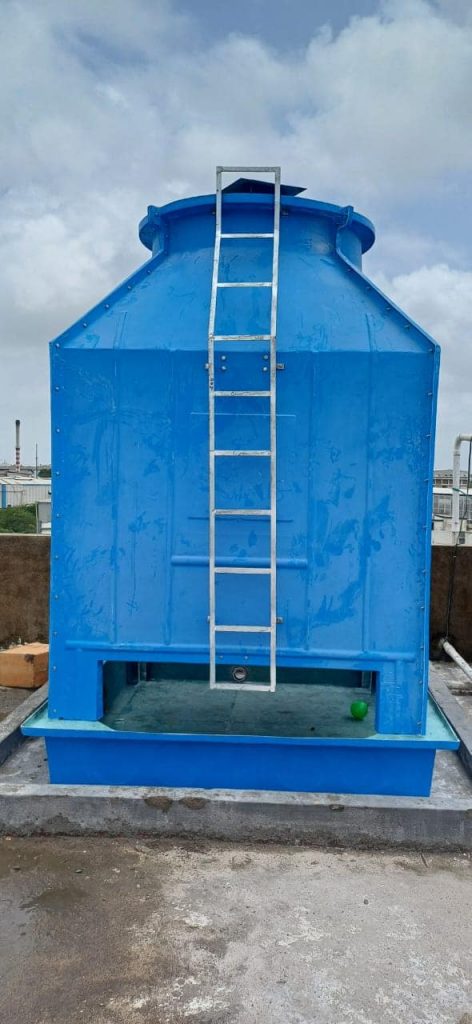Use of Fans in Cooling Towers
Fans are a critical component in mechanical draft cooling towers, ensuring efficient air circulation to enhance heat exchange between water and air. Their role varies depending on the cooling tower type (forced draft, induced draft, or hybrid systems).
1. Purpose of Fans in Cooling Towers Fans are used to:
> Force or induce airflow through the tower to maximize heat transfer
Control cooling capacity by adjusting fan speed (variable frequency drives).
> Maintain consistent performance in varying weather conditions.
> Reduce humidity & drift losses by optimizing air-water contact.
2. Types of Cooling Tower Fans & Their Roles
A. Forced Draft Cooling Towers (Fans at the Air Inlet)
- Fan Position: Located at the base (pushes air into the tower).
- Function:
- Forces air upward through the fill media.
- Provides better control over airflow.
- Advantages:
- Easier maintenance (fan at ground level).
- Less recirculation of hot air.
- Disadvantages:
- Fans exposed to humid, corrosive air → higher wear.
- Less energy-efficient for large capacities.
B. Induced Draft Cooling Towers (Fans at the Air Outlet)
- Fan Position: Located at the top (pulls air through the tower).
- Function:
- Creates a suction effect, drawing air upward.
- Ensures uniform air distribution.
- Advantages:
- More energy-efficient (handles warm, less dense air).
- Less corrosion risk (fan in drier exhaust air).
- Better for large cooling capacities.
- Disadvantages:
- Harder to maintain (fan at height).
- Higher initial cost.
C. Axial vs. Centrifugal Fans
| Fan Type | Use Case | Advantages | Disadvantages |
| Axial Fans (Propeller-style) | Most common in cooling towers | High airflow, energy-efficient | Noisy, less pressure capability |
| Centrifugal Fans (Blower-style) | High-pressure applications (e.g., industrial) | Handles resistance better (e.g., ductwork) | Less efficient for large airflow needs |
. Key Considerations for Fan Selection
- Airflow Requirements – Larger towers need high-capacity axial fans.
- Energy Efficiency – Variable Frequency Drives (VFDs) help optimize speed.
- Noise Control – Induced draft fans are quieter than forced draft.
- Corrosion Resistance – Fiberglass or coated fans for harsh environments.
- Maintenance Access – Forced draft fans are easier to service.
4. When Are Fans Not Needed? (Natural Draft Cooling Towers)
- Natural draft towers rely on chimney effect (hot air rises naturally).
- Used in very large power plants (no fans = lower operating costs).
- Disadvantage: Less control over cooling performance.
